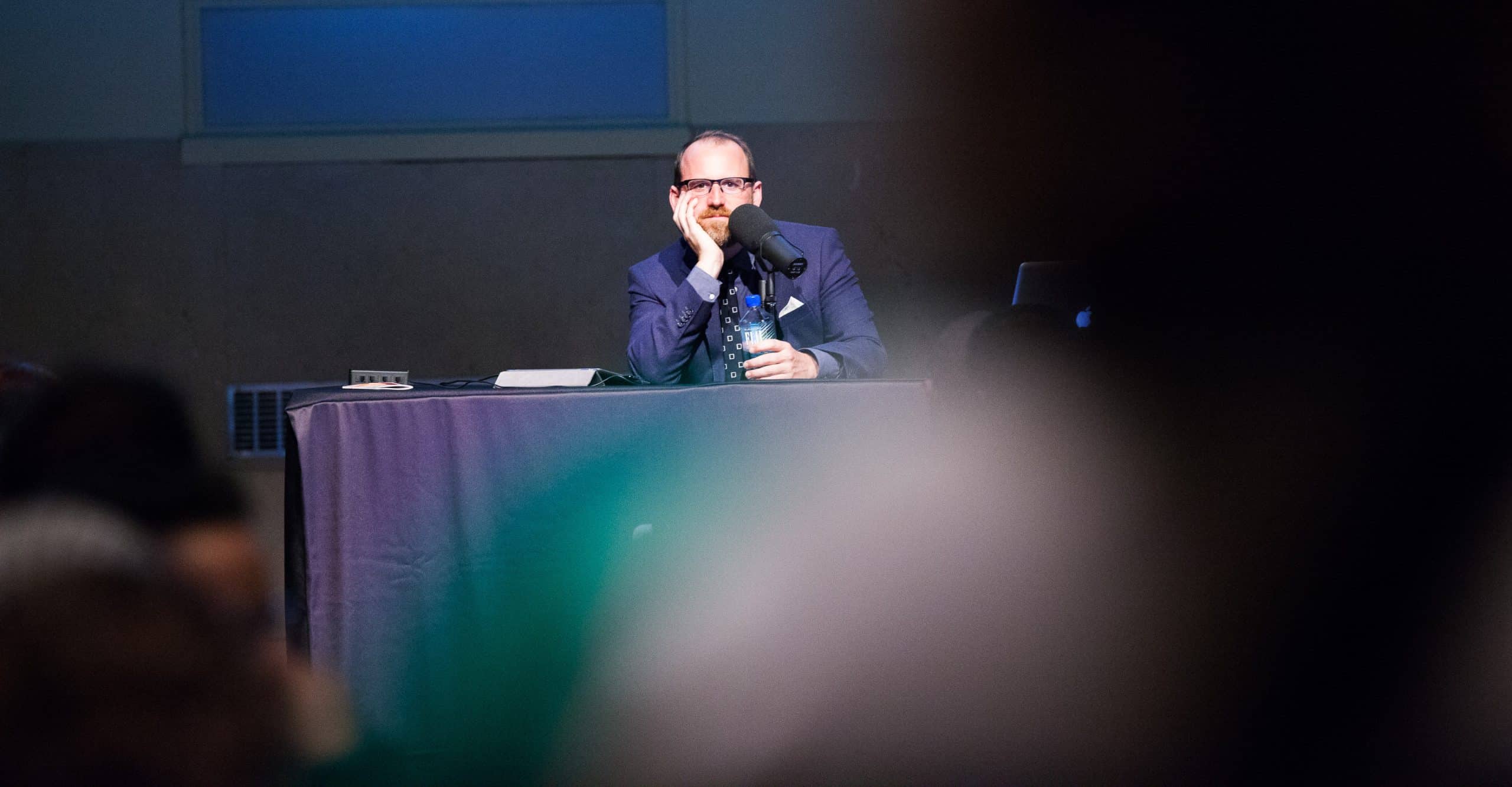Zu Beginn dieses Jahres, Format hatte die Ehre, Roman Mars Live in Toronto auf der DesignbörseKanadas Designmuseum. Hier sind einige unserer Lieblingsfotos von der Veranstaltung sowie die wichtigsten Erkenntnisse aus unserem Gespräch mit Roman.
Der römische Mars auf dem Weg 99% Unsichtbar hat seinen Anfang genommen...##
Ich bin seit fünfzehn Jahren Produzent beim öffentlichen Rundfunk. Ich habe bei jeder Art von öffentlicher Radiosendung gearbeitet, die es gibt. Und vor etwa vier Jahren habe ich angefangen 99% Unsichtbareine kleine Radiosendung über Architektur und Design. Sie sollte eigentlich in den Morgensendungen der lokalen öffentlichen Radiosender ausgestrahlt werden, aber dann wurde sie einfach als Podcast veröffentlicht.
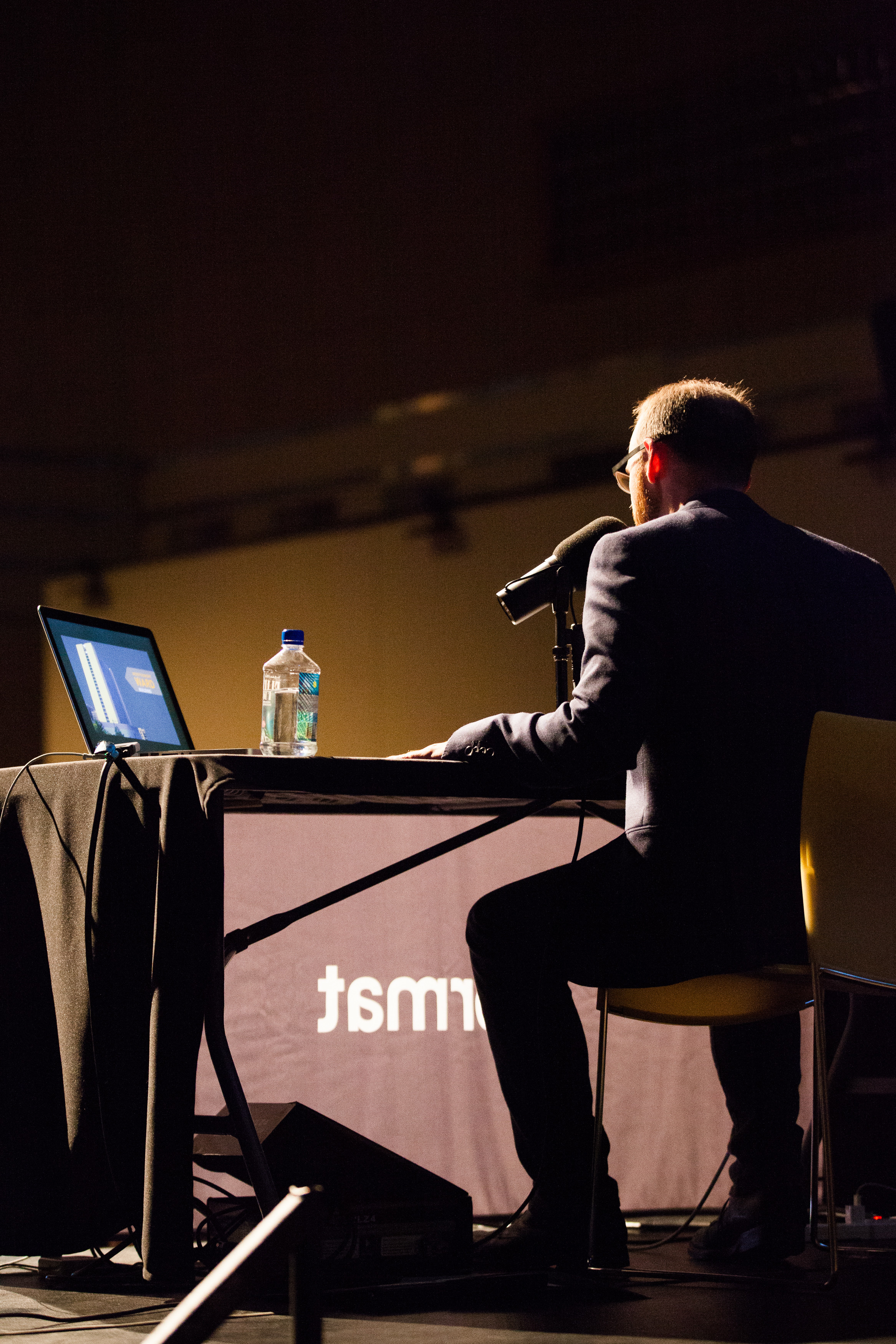
Es begann damit, dass das American Institute of Architecture, der Ortsverband San Francisco, und KLA, der Radiosender in San Francisco, einige Leute gemeinsam hatten. Das AIA wandte sich an KLA und schlug vor, dass wir vielleicht einen Beitrag über ein Gebäude in SF machen könnten. Sie fragten mich, was ich davon hielte und welche Art von Sendung ich an meiner Stelle machen würde, und ich war sehr daran interessiert, den Begriff auf alle Arten von Design auszuweiten - nicht unbedingt über San Francisco, aber in Verbindung mit San Francisco, denn SF ist ein sehr designorientierter Ort.
Es war wirklich schwer, sie auf nur vier Minuten zu kürzen - ich habe immer eine viel längere Geschichte zu erzählen. Schließlich kam ich an den Punkt, an dem ich die letzte Anekdote nicht mehr kürzen konnte und sie einfach stehen ließ und als Podcast veröffentlichte. Dabei merkte ich sehr schnell, dass ich die längere Version erzählte und sie für die kurze Version kürzte, anstatt die kurze Version zu machen und sie zu erweitern. Ich wusste, dass ich Geschichten erzählte, die nur in 15 Minuten erzählt werden konnten, und die kurze Version war danach wirklich schwer zu machen.
Was mir gefällt, ist die Spannung, Geschichten über Design zu erzählen, ohne Bilder.
##... warum er sich entschieden hat, einen Podcast über visuelles Design zu machen ...##
Im Grunde ist das Radio das, was ich am besten kann. Wir haben darüber nachgedacht, es auf andere Medien auszuweiten, aber das ist für mich nicht selbstverständlich. Was mir daran gefällt, ist die Spannung, die entsteht, wenn man Geschichten über Design erzählt, ohne visuelle Elemente. Ich habe oft das Gefühl, dass das Design durch seine Ästhetik in die Enge getrieben wird und nicht durch seinen Zweck und seine Bedeutung. Wenn du das visuelle Element weglässt, lernst du etwas sehr Grundlegendes über Design: Bei Design geht es um Geschichten, Prozesse und Problemlösungen. Ich lasse mich von den Geschichten der Dinge verführen; ich kann wirklich hässliche Gebäude mögen, wenn sie eine gute Geschichte haben.
Das eigentliche "Problem", das es zu überwinden gilt [einen Podcast über visuelles Design zu machen], ist also eigentlich die Stärke der Sendung.
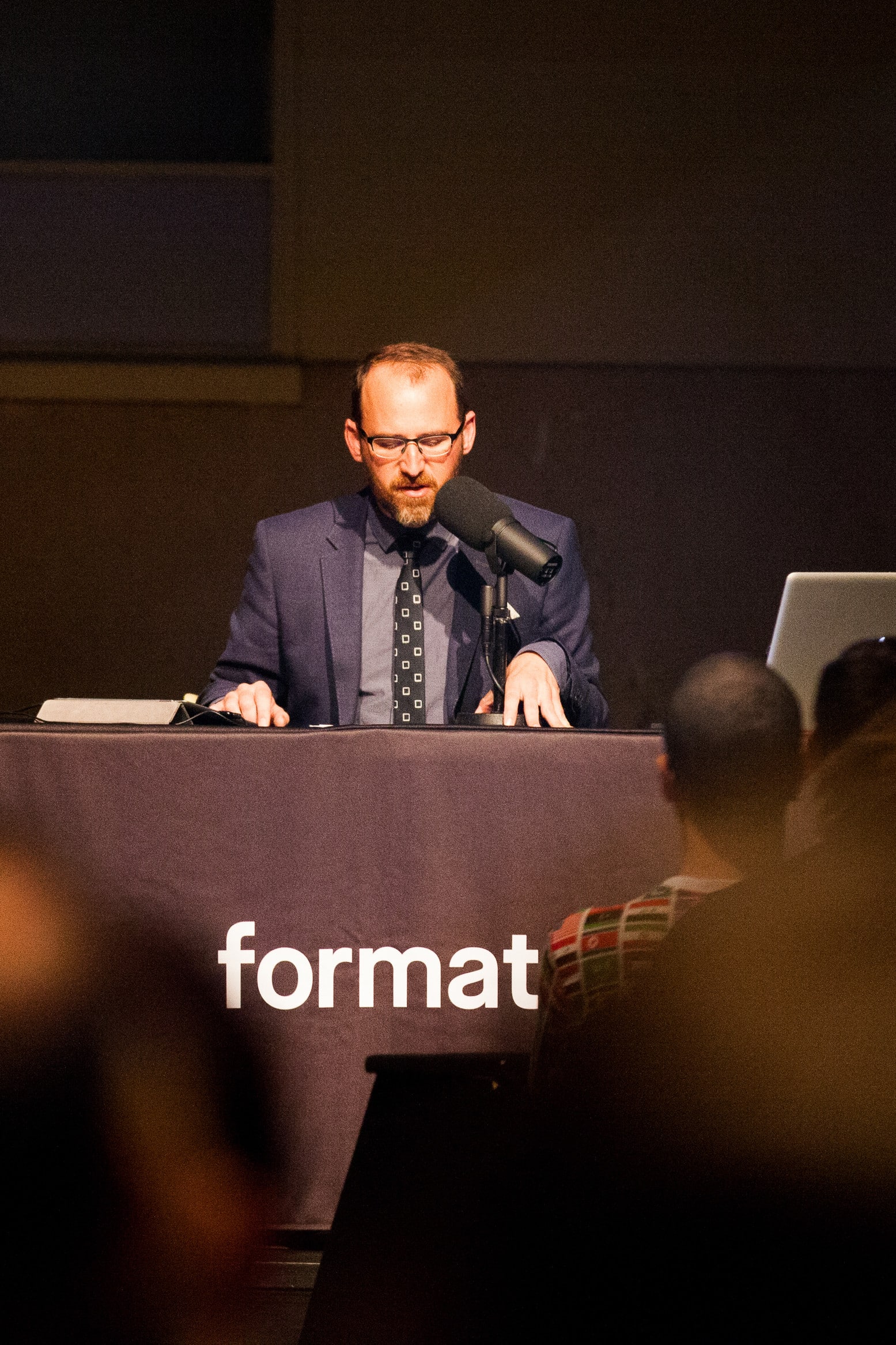
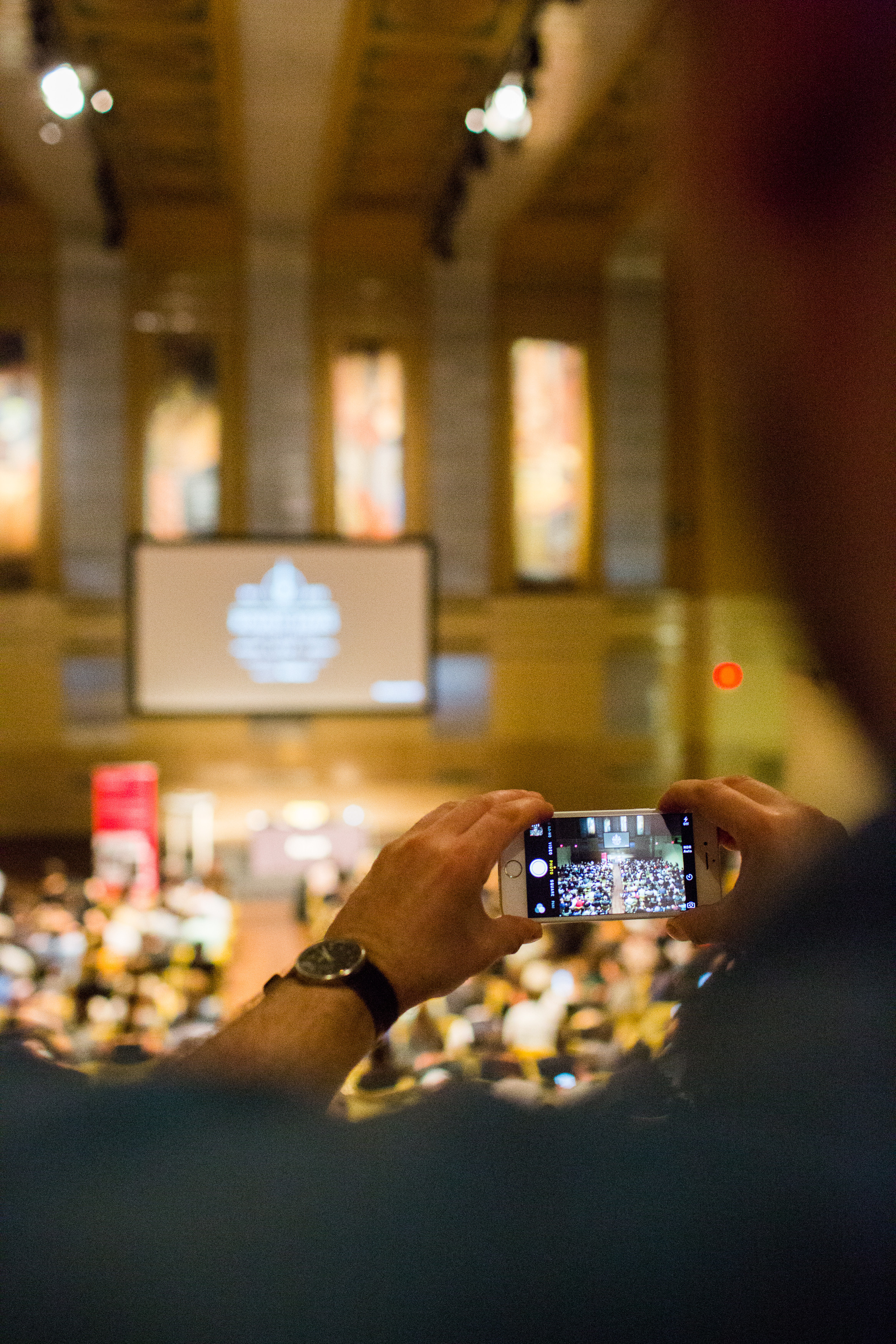
Podcasts sind intimer - es ist eine persönliche Verbindung.
##... über die Macht des Zuhörens ...##
Es ist eine echte Macht, die Stimme im Kopf von jemandem zu sein. Ich kann dich dazu bringen, Dinge zu denken, die du nicht unbedingt denken würdest. Das ist die Prämisse der Show: eine Art geekige Begeisterung für die Welt. [Du könntest dir zum Beispiel etwas ansehen und es automatisch hassen. Aber wenn du keine anderen Anreize hast, dann ist das, was ich dir sage, die Wahrheit - und du bist dabei. Und vielleicht kommst du damit sogar an einen anderen Punkt, als du es von allein getan hättest.
##... über die Zukunft der Radiotopia ...##
Ich dachte, wir könnten das Modell der 99% Unsichtbar und sie auf andere öffentliche Radiomacher anwenden, die nicht wirklich in den traditionellen Bereich des Radios passen. [Gemeinsam wollten wir unsere eigene kleine, neu gestaltete Radiowelt erschaffen, deren Idealismus direkt im Namen steckt.Radiotopia].
Die Hauptsache war, dass ich nicht wollte, dass der Erfolg meiner Show ein Zufall ist. Ich wollte das System wirklich zum Besseren verändern, durch dieses Kollektiv. Radiotopia ist dazu da, [diesen Schöpferinnen und Schöpfern] eine Plattform, ein Publikum und Unterstützung zu geben, damit ihre Shows wachsen können.
##... über seine eigenen aktuellen Lieblingspodcasts ...##
- Slate Culture Gabfest
- Kermode und Mayo's Filmkritiken
- Antworte mir das
- Richter John Hodgman
- Planet Money
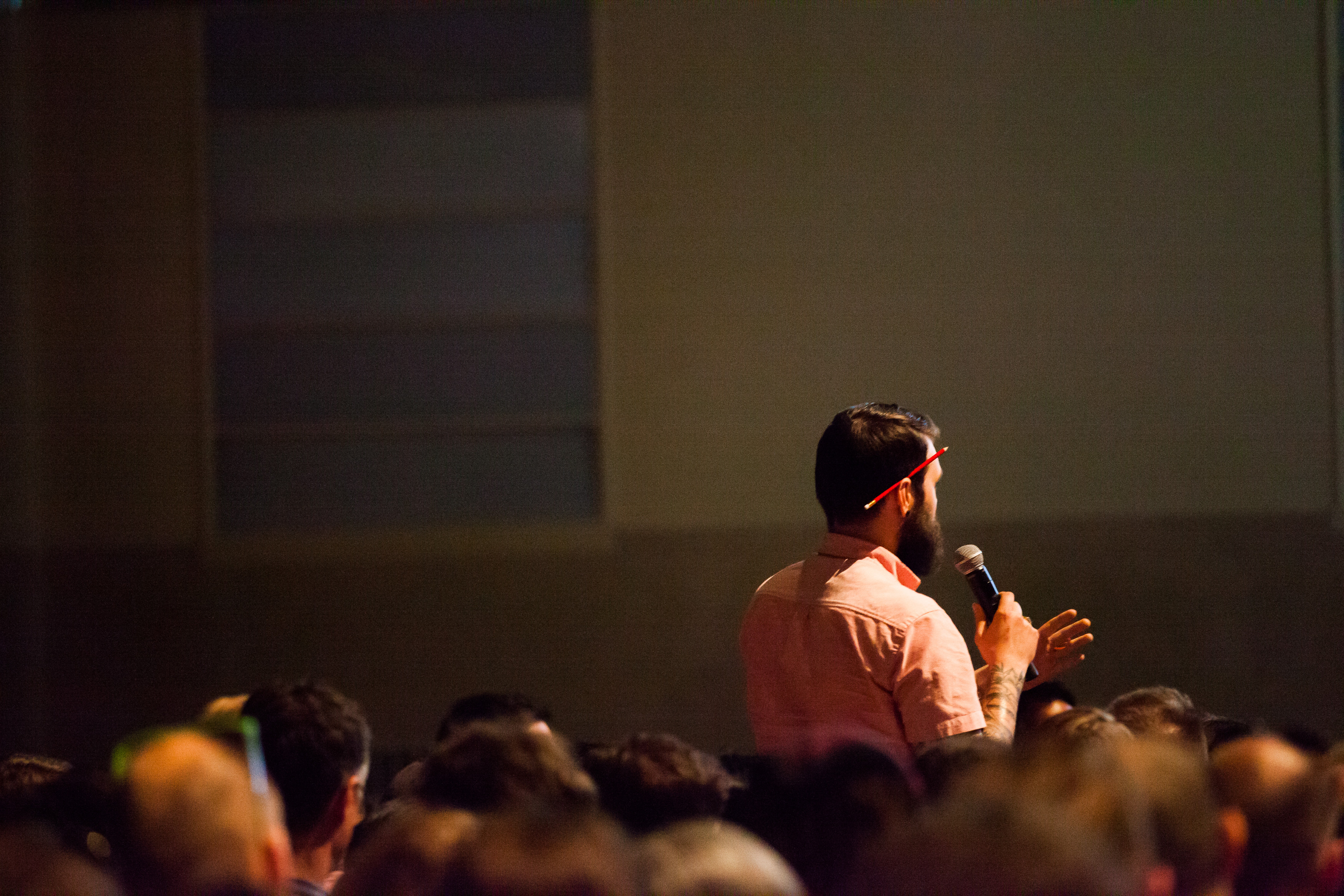
##... und warum 1 engagierter Podcast-Hörer 10 000 Radiohörer wert ist.##
Das Podcast-Publikum wählt dich aus; es ist nicht zufällig. Sie wählen aus, was sie hören, sie teilen es und sie interagieren mit dir. Radio ist wichtig, aber ich denke, Podcasts sind intimer. Es ist eine persönliche Verbindung.
Check out 99% Unsichtbar hier.##
Datum des ursprünglichen Interviews: 7. Mai 2015.
